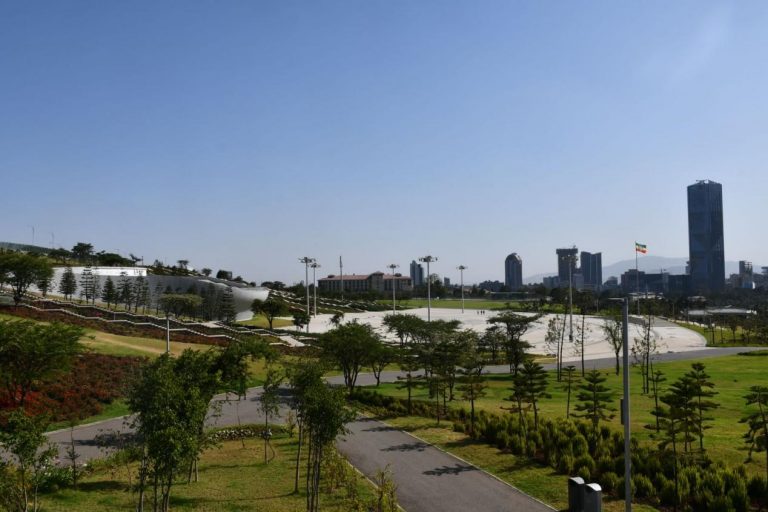
By He Yin, On December 2, Chinese President Xi Jinping attended the fourth symposium on Belt and Road construction work in Beijing and delivered an important speech.
He acknowledged the major achievements in Belt and Road cooperation and made comprehensive arrangements for promoting high-quality Belt and Road cooperation in the present and near future, providing important guidance and charting the course forward for promoting high-quality Belt and Road cooperation in the next golden decade.
As changes of the world, the times and history unfold, Xi’s groundbreaking proposal of the BRI has become a milestone of historic significance in the history of human development.
Since the BRI was put forth in 2013, the Belt and Road cooperation has consistently embraced the Silk Road spirit of peace and cooperation, openness and inclusiveness, mutual learning and mutual benefits. It has stayed committed to the principle of “planning together, building together, and benefiting together.” The sectors and scope of Belt and Road cooperation have continued to expand, while the level of cooperation has been further elevated.
The cooperation has demonstrated greater international appeal, influence, and rallying power, and has made major achievements, making China’s contribution to enhancing friendship with Belt and Road participating countries and boosting their economic and social development.
So far, more than 150 countries and over 30 international organizations have signed Belt and Road cooperation documents. China has hosted three sessions of the Belt and Road Forum for International Cooperation, and has established over 20 specialized multilateral cooperation platforms under the BRI.
This year, China signed the plans for the promotion of cooperation in jointly building the Belt and Road with countries including Egypt, Timor-Leste, and Peru. Brazil also joined the Belt and Road international cooperation family.
“Never before in history has any initiative brought together over 150 countries like the BRI,” said Dilma Rousseff, president of the New Development Bank.
Belt and Road cooperation transcends differences between civilizations, cultures, social systems, and stages of development. It represents humanity’s joint pursuit of development for all, represents the advancing of the times, and is the right path forward.
Through high-quality Belt and Road cooperation, China shares with the rest of the world the development opportunities of Chinese modernization, injecting more confidence and strength into global peace and development.
Last year, China announced eight major steps it will take to support the joint pursuit of high-quality Belt and Road cooperation, demonstrating its commitment to deepening Belt and Road partnerships and building an open, inclusive and interconnected world for common development. With these concrete actions, China has demonstrated its role as a responsible major country.
The BRI and its core principles have been written into documents from the United Nations (UN), the G20, APEC, and other international and regional organizations. Its role as a driver and leader of global development continues to strengthen.
A recent report by Brussels-based think tank Bruegel revealed that since its inception, the BRI has appeared nearly 1,000 times in UN documents, with over 500 mentions in 2019 alone. This underscores the global vision embodied in this Chinese initiative.
Belt and Road cooperation was proposed by China, but its benefits and opportunities are for the world to share.
China and the Belt and Road partner countries have achieved fruitful results in “hard connectivity” of infrastructure. The China-Europe freight train network has expanded to 227 cities in 25 European countries; the Silk Road Maritime routes connect 145 ports across 46 countries globally; and the air Silk Road links 104 cities in 54 countries. A large number of signature projects and “small yet smart” people-centered programs have been launched.
China and the Belt and Road partner countries are also steadily advancing “soft connectivity” of rules and standards. China has signed 113 standardization agreement documents with 69 countries and international organizations, and inked 23 free trade agreements with 30 countries and regions, with prominent improvement in trade and investment liberalization and facilitation.
China and the Belt and Road partner countries have been deepening “heart connectivity” between peoples. China has set up the Chinese government scholarship Silk Road Program and launched the Action on Silk Road People-to-People Connectivity. The flourishing exchanges between non-governmental organizations, think tanks, media organizations and the youth have composed a symphony of friendship for the Belt and Road cooperation.
Conforming to the new trends of global development, high-quality Belt and Road cooperation is witnessing new highlights and releasing new vitality in green, digital and innovative development. It is injecting fresh impetus into the global economy, creating new opportunities for global development, and building a new platform for international economic cooperation for win-win outcomes among partner countries.
Belt and Road cooperation has entered the new stage of high-quality development. China is ready to work hand in hand with Belt and Road partner countries and continue adhering to the principle of “planning together, building together, and benefiting together,” and the philosophy of open, green and clean cooperation, and the goal of pursuing high-standard, people-centered and sustainable cooperation, follow through on the eight major measures for supporting high-quality Belt and Road cooperation, and focus on connectivity.
China will work to improve and promote the high-quality Belt and Road cooperation mechanism, create new space for win-win development at a higher level and with greater resilience and sustainability.
These efforts aim to support the modernization of countries worldwide and contribute to the building of a community with a shared future for mankind.










